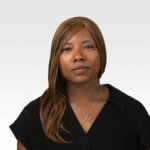Transforming Manufacturing Success: The Power of AI Service Blueprints
Artificial intelligence unlocks the complexity of service blueprints for manufacturers by taking a data-driven approach to transforming experiences
Read More
Customer service vs. customer experience: Which should you prioritize? The answer: They both work together.

Author: Robin Long
In today’s world, terms like “customer service” and “customer experience” are often used interchangeably. While both play essential roles in how a brand interacts with its customers and employees, the two concepts are distinct and require different strategies to be effective. Organizations can improve their bottom line, brand reputation, and customer loyalty by understanding and applying both elements to their overall business strategy.
Customer service is the sum of all direct interactions with a customer, such as answering questions, resolving issues, and giving and providing information. It aims to ensure that customers’ needs are met and that any problems they encounter are addressed quickly and efficiently.
Some typical customer service interactions include:
Customer service is reactive by nature. It activates only when a customer has a need, want, or emotional response that should be considered by a company. While organizations do need a robust customer service strategy, it’s only one part of the broader customer journey blueprint.
Customer Experience (CX) is the entire journey a customer takes with a brand, from the moment a potential customer becomes aware of a company’s existence, through their initial thought of a need or want, to the ongoing relationship they maintain after interacting with an organization. Every touchpoint shapes their unique perception of the brand. Think about the emotions invoked when a customer considers particular products or services — this is the experience coming to life.
Customer experience is more holistic than customer service because it covers the entire customer lifecycle. CX focuses on design that builds long-term loyalty and word-of-mouth advocacy by consistently exceeding expectations across all interactions.
While customer service and CX differ, they are interconnected and ultimately determine an organization’s overall brand recognition, reputation, and success. Focusing solely on customer service without considering the broader customer experience may limit the ability to foster long-term customer loyalty. In contrast, prioritizing customer experience requires addressing service quality to avoid unmet customer expectations.
Unlike customer service, which is usually reactive, CX is the proactive and strategic approach to creating a positive emotional connection at every stage of the customer journey.
Think of a body. Customer service acts as the immune system, reacting to information sent from the brain about possible problems. In contrast, Customer Experience works like the heart to proactively circulate the necessary oxygen and nutrients. With the reactive and proactive working together, the entire system can succeed.
In conclusion, understanding the difference between customer service and customer experience is important for implementing strategies that address customer needs more holistically. While customer service is vital for solving immediate issues, customer experience focuses on building lasting relationships through every customer interaction with the brand. By prioritizing both, organizations can drive customer satisfaction, loyalty, and business growth.
Looking to optimize your customer journey? Contact us today to speak to an expert or visit our Customer Experience site to learn more.

Get the latest updates and Insights from RevGen delivered straight to your inbox.